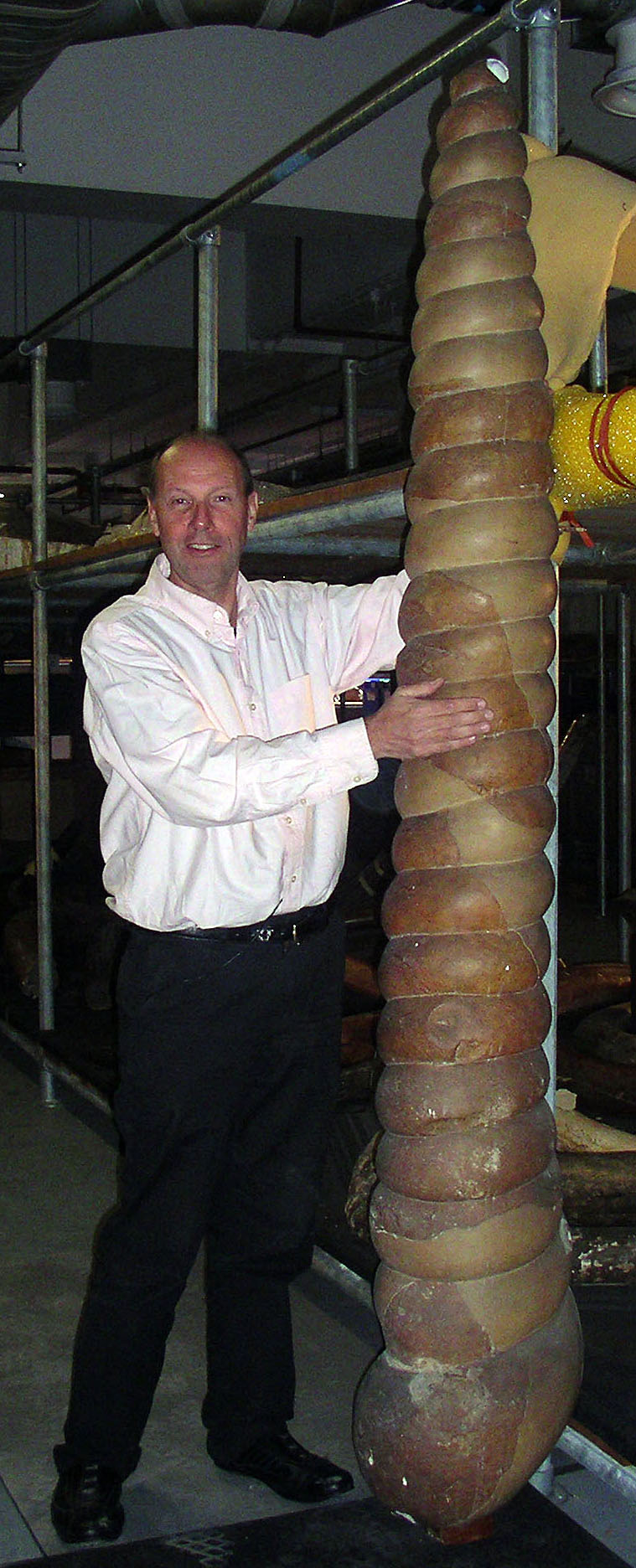Dinocochlea on:
[Wikipedia]
[Google]
[Amazon]
 ''Dinocochlea ingens'' is a
''Dinocochlea ingens'' is a
This is not a perfect dinosaur turd. Or is it?
at
 ''Dinocochlea ingens'' is a
''Dinocochlea ingens'' is a trace fossil
A trace fossil, also known as an ichnofossil (; from el, ἴχνος ''ikhnos'' "trace, track"), is a fossil record of biological activity but not the preserved remains of the plant or animal itself. Trace fossils contrast with body fossils, ...
specimen held in the Natural History Museum
A natural history museum or museum of natural history is a scientific institution with natural history collections that include current and historical records of animals, plants, fungi, ecosystems, geology, paleontology, climatology, and more. ...
of London. It is a symmetrical helicospiral several metres in length that was famously unexplained until shown in 2009 to be a concretion
A concretion is a hard, compact mass of matter formed by the precipitation of mineral cement within the spaces between particles, and is found in sedimentary rock or soil. Concretions are often ovoid or spherical in shape, although irregular ...
formed around the burrow of a worm.
History
Found in 1921 in the Wealden area ofSussex
Sussex (), from the Old English (), is a historic county in South East England that was formerly an independent medieval Anglo-Saxon kingdom. It is bounded to the west by Hampshire, north by Surrey, northeast by Kent, south by the English ...
in England during construction of an arterial road
An arterial road or arterial thoroughfare is a high-capacity urban road that sits below freeways/motorways on the road hierarchy in terms of traffic flow and speed. The primary function of an arterial road is to deliver traffic from collector ro ...
, ''Dinocochlea'' was originally presumed to be a fossilised gastropod shell
The gastropod shell is part of the body of a Gastropoda, gastropod or snail, a kind of mollusc. The shell is an exoskeleton, which protects from predators, mechanical damage, and dehydration, but also serves for muscle attachment and calcium s ...
. As such, it was given a Latin name that translates to "giant terrible snail" using the "dino-" prefix in a nod to ''Dinosaur
Dinosaurs are a diverse group of reptiles of the clade Dinosauria. They first appeared during the Triassic period, between 243 and 233.23 million years ago (mya), although the exact origin and timing of the evolution of dinosaurs is t ...
'' ("terrible lizard") and refers to the nearby, paleontologically significant, quarry that featured many dinosaur fossils, the "''Iguanodon
''Iguanodon'' ( ; meaning 'iguana-tooth'), named in 1825, is a genus of iguanodontian dinosaur. While many species have been classified in the genus ''Iguanodon'', dating from the late Jurassic Period to the early Cretaceous Period of Asia, Eu ...
'' Necropolis
A necropolis (plural necropolises, necropoles, necropoleis, necropoli) is a large, designed cemetery with elaborate tomb monuments. The name stems from the Ancient Greek ''nekropolis'', literally meaning "city of the dead".
The term usually im ...
". This name also gave rise to a second theory on the origin of the object - that it is a coprolite
A coprolite (also known as a coprolith) is fossilized feces. Coprolites are classified as trace fossils as opposed to body fossils, as they give evidence for the animal's behaviour (in this case, diet) rather than morphology. The name is de ...
(fossilized animal dung). The gastropod theory is now considered incorrect on the basis that there were no shell traces, nor many of the features usually found in gastropod shells such as ridges, and coils tapering to a point. Furthermore, the size of ''Dinocochlea'' is much larger than any other gastropod living or extinct. The coprolite theory is also considered incorrect on the basis that partially digested organic material which would normally remain in the dung was not present. Also, whilst dung can be formed in a spiral (notably shark
Sharks are a group of elasmobranch fish characterized by a cartilaginous skeleton, five to seven gill slits on the sides of the head, and pectoral fins that are not fused to the head. Modern sharks are classified within the clade Selachimo ...
s due to their digestive system's spiral valve
A spiral valve or scroll valve is the corkscrew-shaped lower portion of the intestine of some sharks, Acipenseriformes (sturgeon and paddlefish), rays, skates, bichirs, Lepisosteiformes (gars), and lungfishes. A modification of the ileum, the ...
), the consistency of ''Dinocochlea'' makes this unlikely.
''Dinocochlea'' was donated to the British Museum (Natural History) (as it was known at the time, until the Natural History Museum's separation from the British Museum). However, in 1947 the Geologists' Association
The Geologists' Association, founded in 1858, is a British organisation with charitable status for those concerned with the study of geology. It publishes the ''Proceedings of the Geologists' Association''
and jointly with the Geological Society ...
argued that the specimen was "...taken from the excavations without permission". ''Dinocochlea'' was featured in the final episode of the 2010 BBC #REDIRECT BBC #REDIRECT BBC #REDIRECT BBC
Here i going to introduce about the best teacher of my life b BALAJI sir. He is the precious gift that I got befor 2yrs . How has helped and thought all the concept and made my success in the 10th board ex ...
series ''Museum of Life
The Museum of Life is located at the Oswaldo Cruz Foundation, in Rio de Janeiro, Brazil.
Location
The museum is located on the campus of Oswaldo Cruz Foundation
The Oswaldo Cruz Foundation (Portuguese ''Fundação Oswaldo Cruz'', also known a ...
'' which documented the work of the Natural History Museum.
References
External links
This is not a perfect dinosaur turd. Or is it?
at
Boing Boing
''Boing Boing'' is a website, first established as a zine in 1988, later becoming a group blog. Common topics and themes include technology, futurism, science fiction, gadgets, intellectual property, Disney, and left-wing politics. It twice won ...
by David Ng, Aug 27, 2010.
{{DISPLAYTITLE:''Dinocochlea''
Natural History Museum, London
Burrow fossils